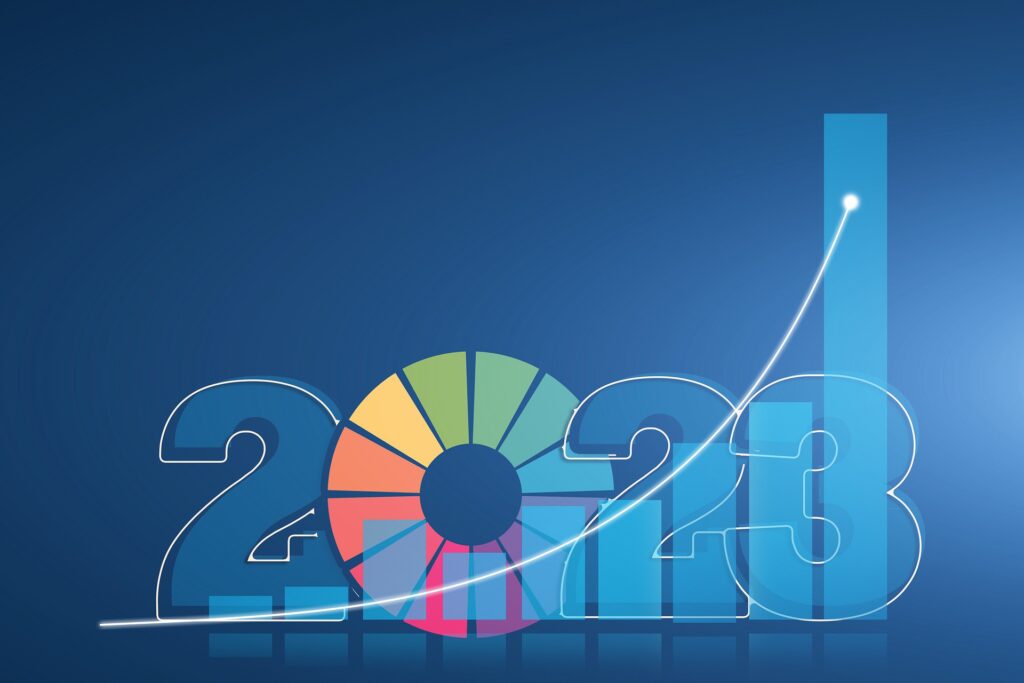
E-commerce is an essential part of the modern retail landscape. The sector has seen remarkable growth in recent years, and the trend shows no signs of slowing down. By 2023, the e-commerce industry will be worth over $6 trillion. With rapid changes in technology, consumer preferences, and global economic conditions, understanding the top e-commerce trends shaping up in 2023 will be critical for businesses looking to stay ahead of the competition.
Let’s look at some important e-commerce trends Qera Digital Marketing is eyeing in the industry for 2023 and beyond, including the rise of AI-driven personalized experiences, the emergence of voice commerce, and the continued shift to mobile-first shopping. By staying informed about these trends, businesses of all sizes can ensure they remain a relevant part of the e-commerce sector for years to come.
Hot Takes in E-commerce
- AI-Driven Personalization
AI-driven personalization is quickly becoming the new standard in e-commerce. Companies are using AI-based technologies to tailor their products and services to the needs of individual customers. This includes using predictive analytics to anticipate customer needs and deliver tailored product recommendations in real time.
AI-driven personalization also enables businesses to create more engaging customer experiences by providing suggestions, offers, and personalized content. In addition, AI-driven technologies can help e-commerce businesses identify trends in customer behavior, allowing them to optimize their campaigns and better target their audiences.
- Voice Commerce
Voice commerce is another trend transforming the e-commerce industry. Voice-driven technologies such as Amazon Alexa and Google Home have revolutionized how consumers shop. Voice commerce enables customers to shop using voice commands, eliminating the need for cumbersome mobile applications or website searches.
This makes it easier for customers to find what they’re looking for quickly and efficiently. Additionally, voice commerce can provide a more engaging customer experience by delivering personalized product recommendations, offers, and more.
- Mobile-First Shopping
The shift to mobile-first shopping is one of the important e-commerce trends to watch in 2023. More than half of all e-commerce sales are expected to come from mobile commerce. This trend is driven by the increasing prevalence of smartphones and other mobile devices and the emergence of 5G networks.
With 5G, customers can expect faster download speeds, more reliable connections, and better overall performance. Additionally, mobile-first shopping offers a more personalized experience, as customers can access personalized offers and recommendations on the go.
- Omni-Channel Shopping
Omni-channel shopping is another significant trend reshaping the e-commerce industry. The omni-channel approach integrates all of a customer’s shopping experiences, from online to in-store.
This can enable your company to create a seamless shopping experience for its customers, regardless of the channel. Omni-channel shopping also gives businesses better insights into customer behavior and preferences, enabling them to target their campaigns better and create more personalized experiences.
Building a Solid Foundation

Technology seems to advance at the speed of light. Most consumers won’t notice it until it affects them personally, but business owners need to stay ahead of the curve instead of playing a never-ending game of catch-up.
One issue with chasing tech trends is that they change so fast that it feels like today’s cutting-edge technology is tomorrow’s obsolete punchline. Fortunately, while the finer points may constantly evolve, several time-tested e-commerce tools should always be in your online toolbox.
- SEO
Search engine optimization, or SEO, is the granddaddy of today’s e-commerce. If people aren’t aware of your website, they can’t buy from you. In the early days of the internet, you’d have to visit each individual search engine’s homepage and manually submit your website for listing. How things have changed!
While Excite, Lycos, and others from internet antiquity still technically exist, we all know that Google is king. Instead of submitting your website to Google, it finds you by identifying the keywords used throughout your site. If optimizing your website for Google’s search algorithm feels like aiming for a moving target, you’re not wrong… You can go it alone, but it pays to hire experts!
- Paid Advertising
Let’s face it, money talks. If you have deep enough pockets, you can absolutely spend until every possible customer sees you. For most businesses, though, every advertising dollar counts. Paying for advertising without a strategy is like burning a pile of cash.
While the internet has revolutionized commerce, the basic tenets of advertising still hold true. If you’re not advertising based on data-driven results, you’re taking a shot in the dark. Placing your ads where your ideal customers are likely to see them and take action is the magic recipe for paid advertising in e-commerce.
- Email and SMS Marketing
All the hot marketing buzzwords in the world don’t change the fact that email remains one of the most cost-effective e-commerce tools. As of 2021, over 90% of American internet users under 65 have an email address. That’s a whole lot of potential customers for your e-commerce business.
SMS marketing is a newer kid on the block, but it shares the same playground as email marketing. Text messaging is the most used data service worldwide; at least 80% of Americans text regularly. Why not put your message directly in your customers’ pockets?
- UI and UX
Everyone likes to get from Point A to Point B as quickly and efficiently as possible. This idea is even more critical regarding the customer journey you provide on your e-commerce site. The more your users have to click to find what they want, the more likely they will click away to a competitor who simply makes it more accessible.
User interface (UI) and user experience (UX) are the keys to making your e-commerce website a joy to use instead of a hassle. You need an objective set of professional eyes to take advantage of these opportunities.
Buckle Up!
E-commerce is rapidly evolving, and understanding the top e-commerce trends is essential for businesses looking to stay ahead of the competition. At the same time, keeping your blade sharp with updates to your foundational e-commerce tools is vital to your ongoing success. By keeping up with the latest trends in 2023, businesses of all sizes can ensure they remain a relevant part of the e-commerce sector for years to come.